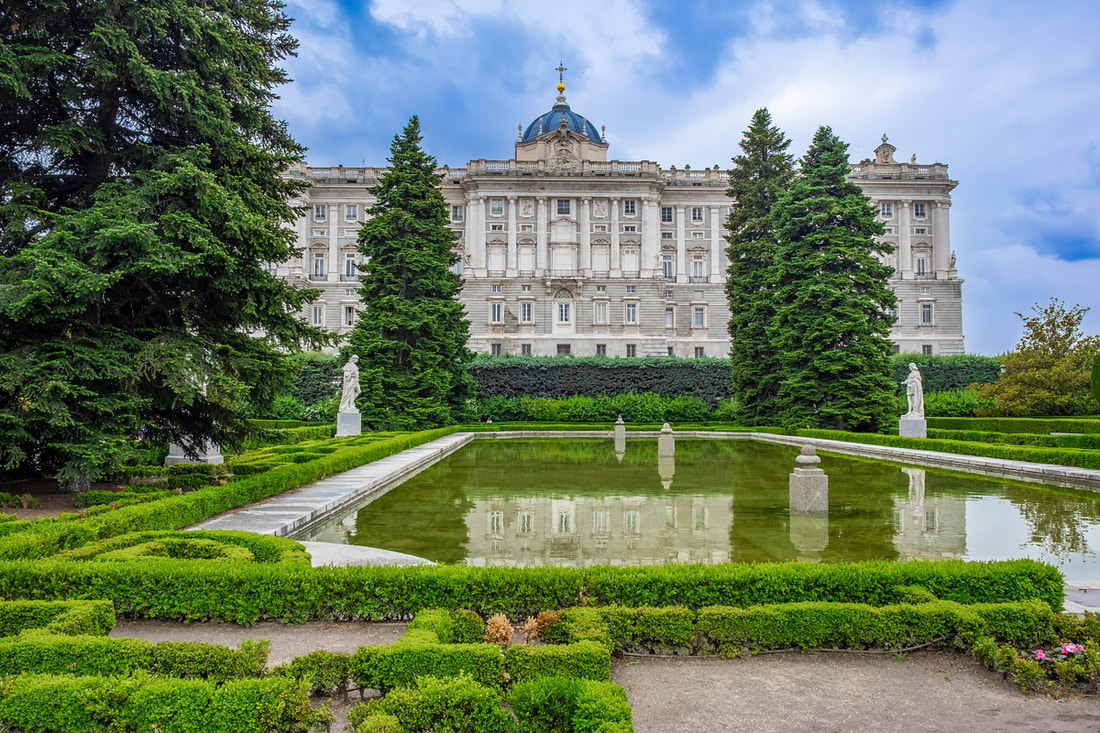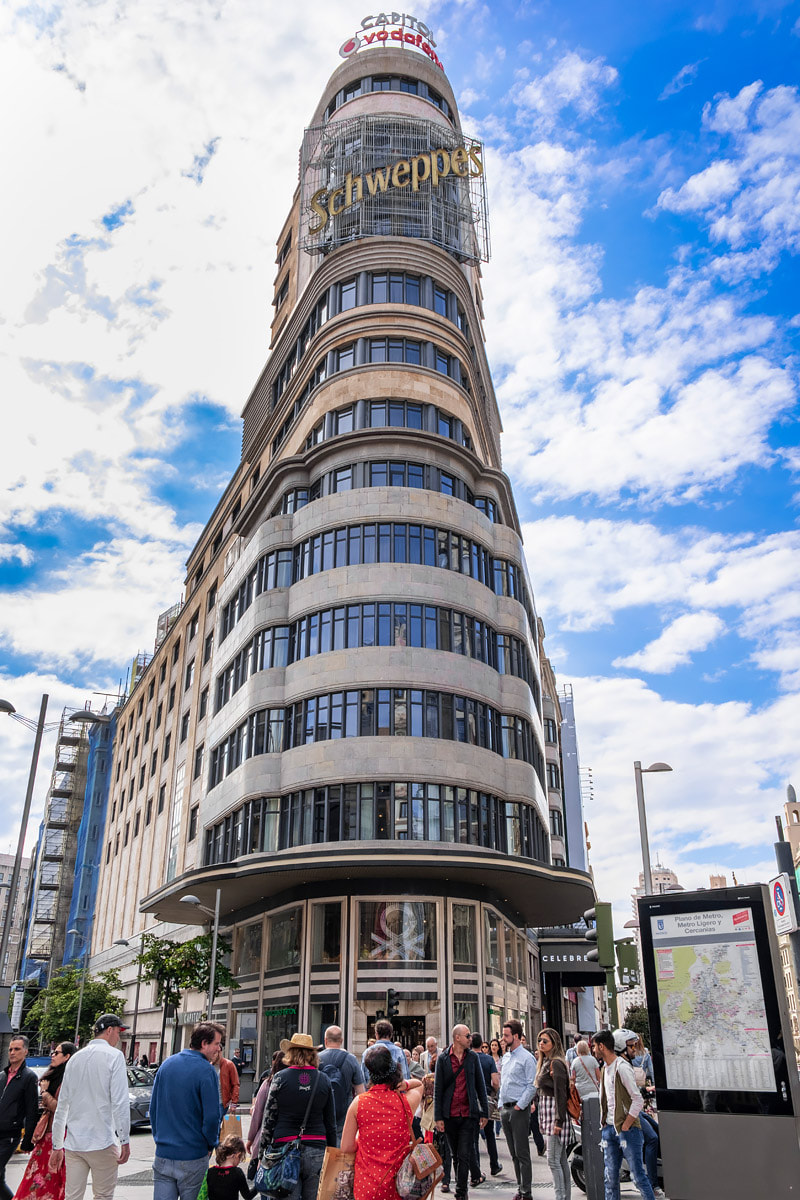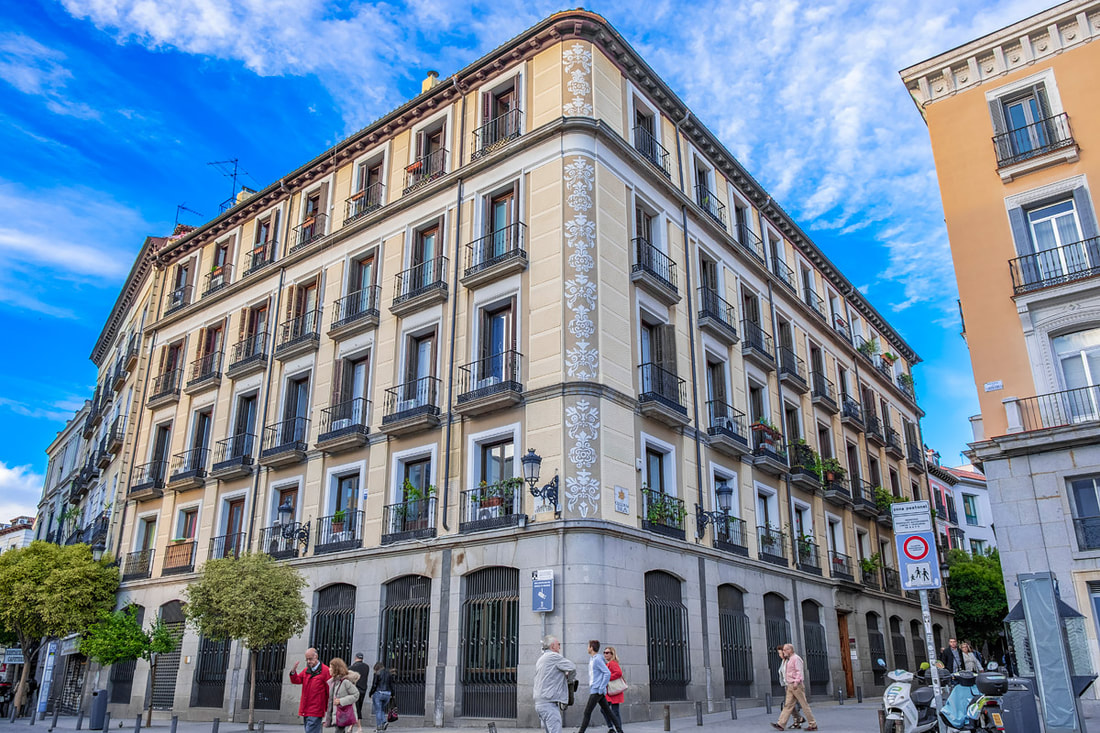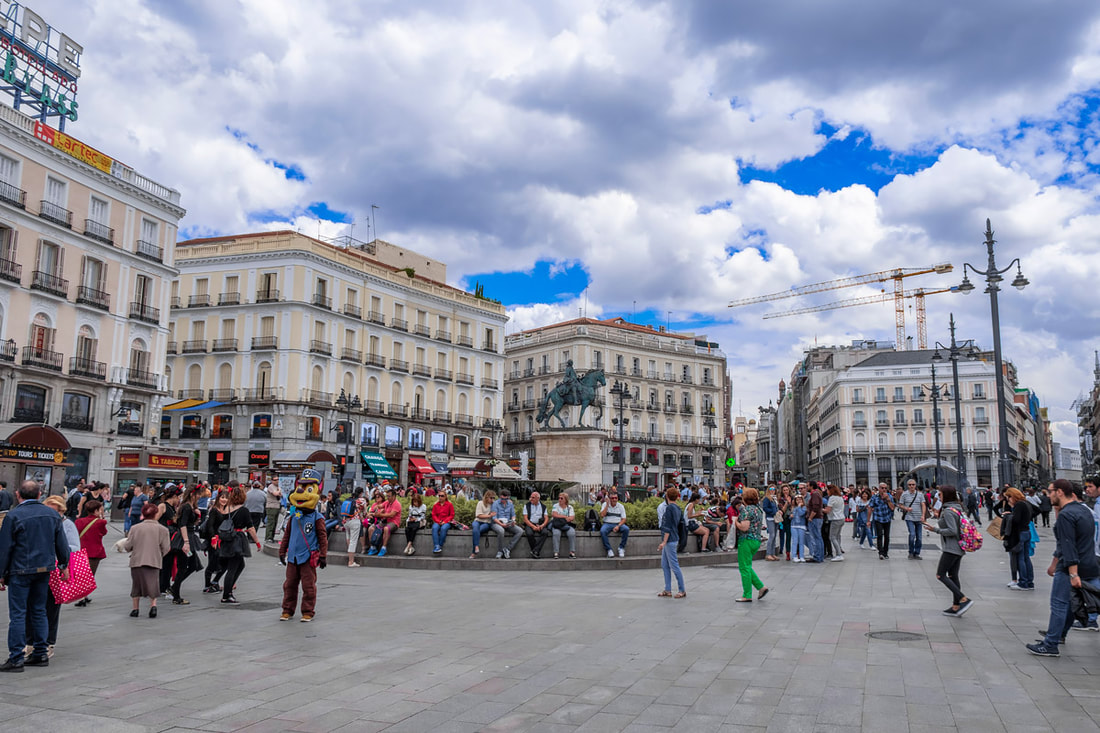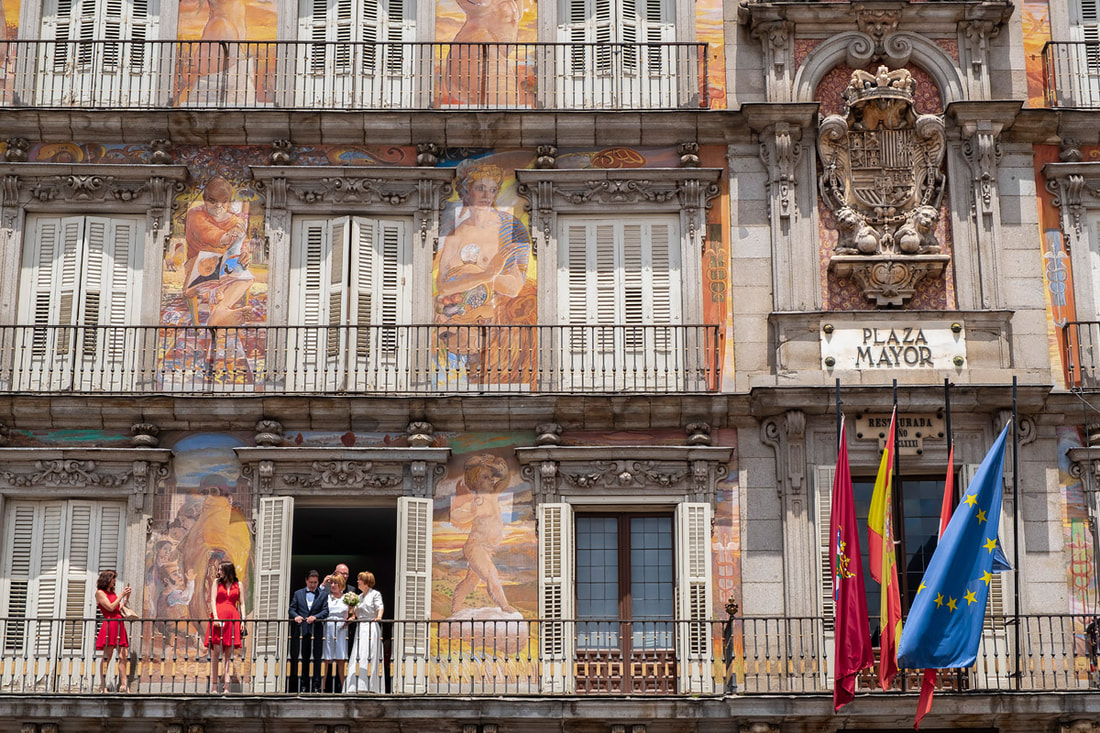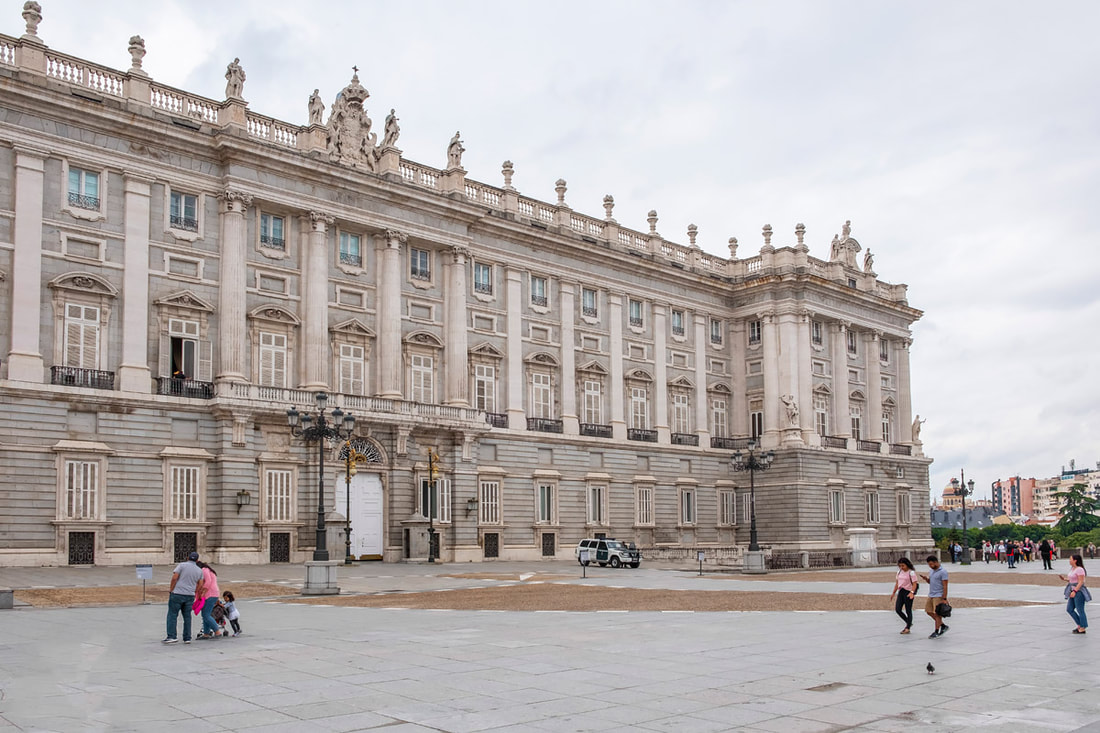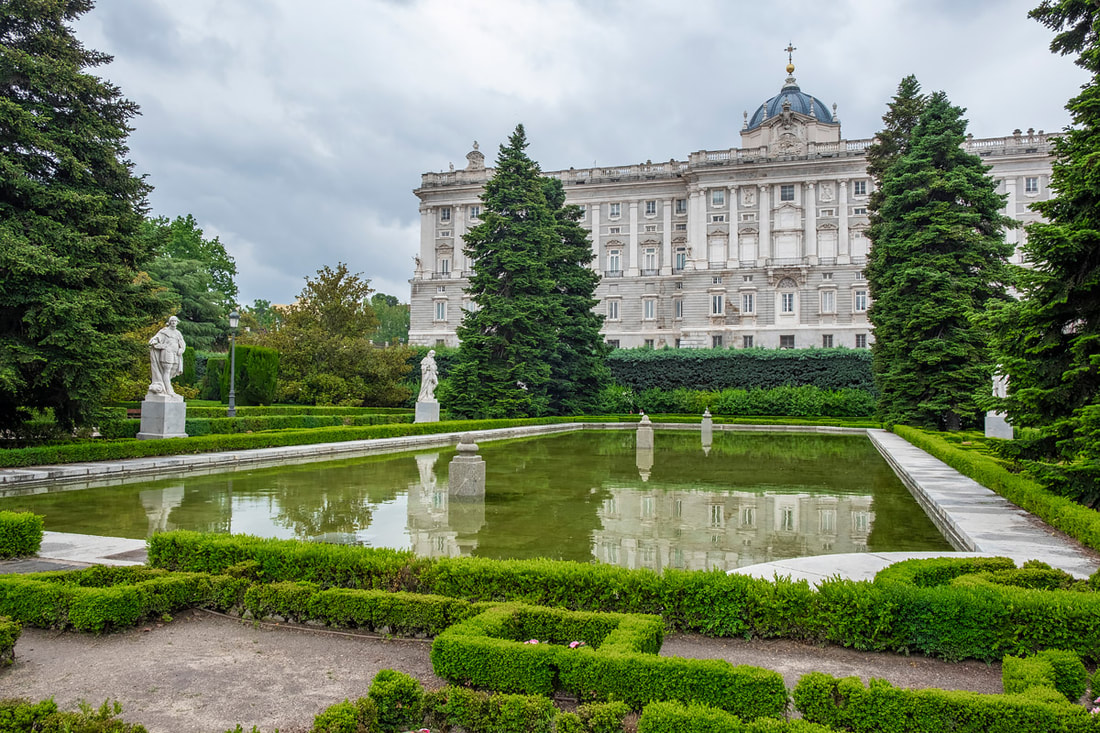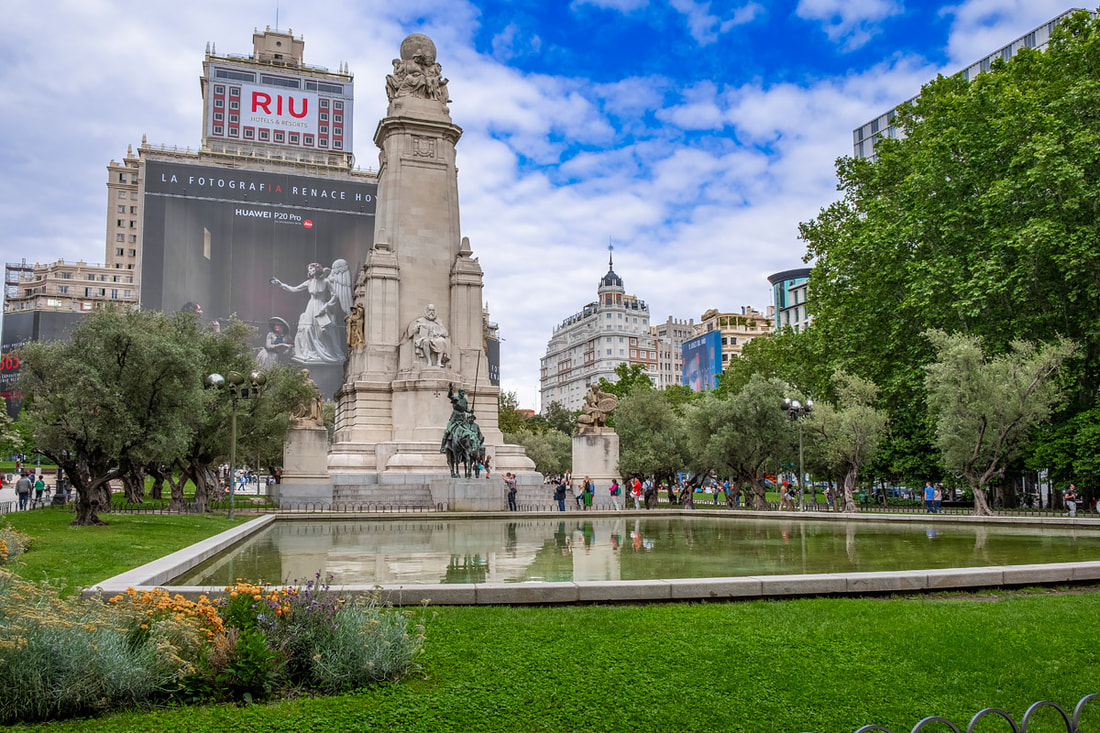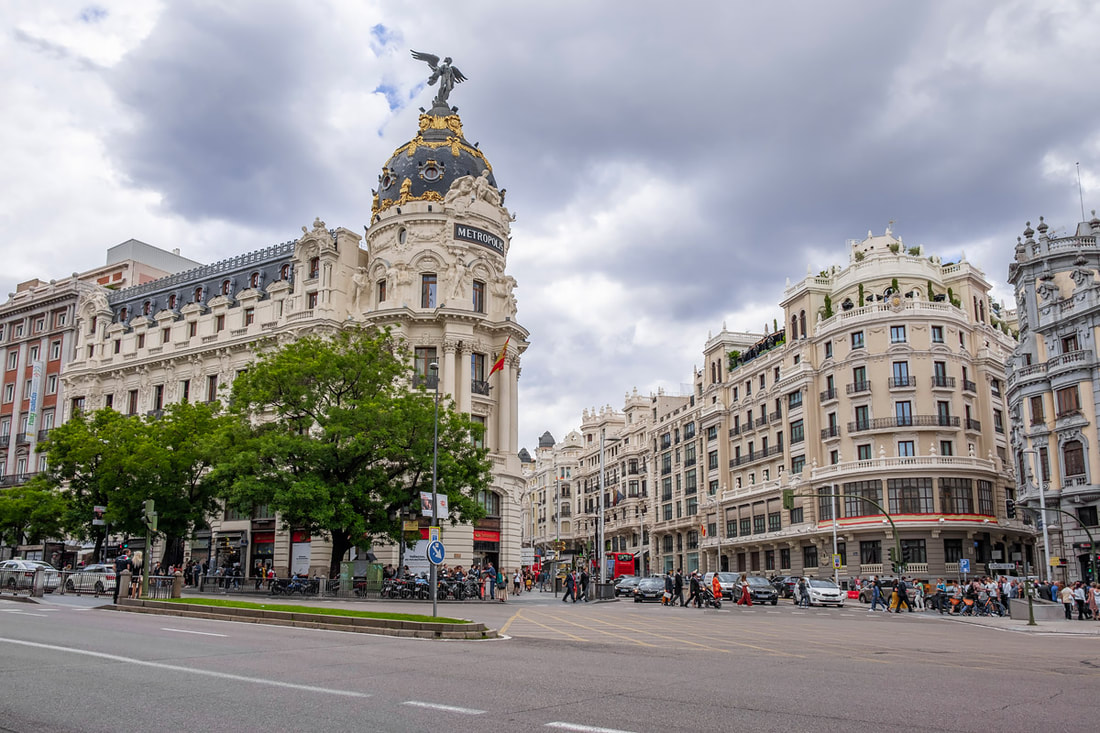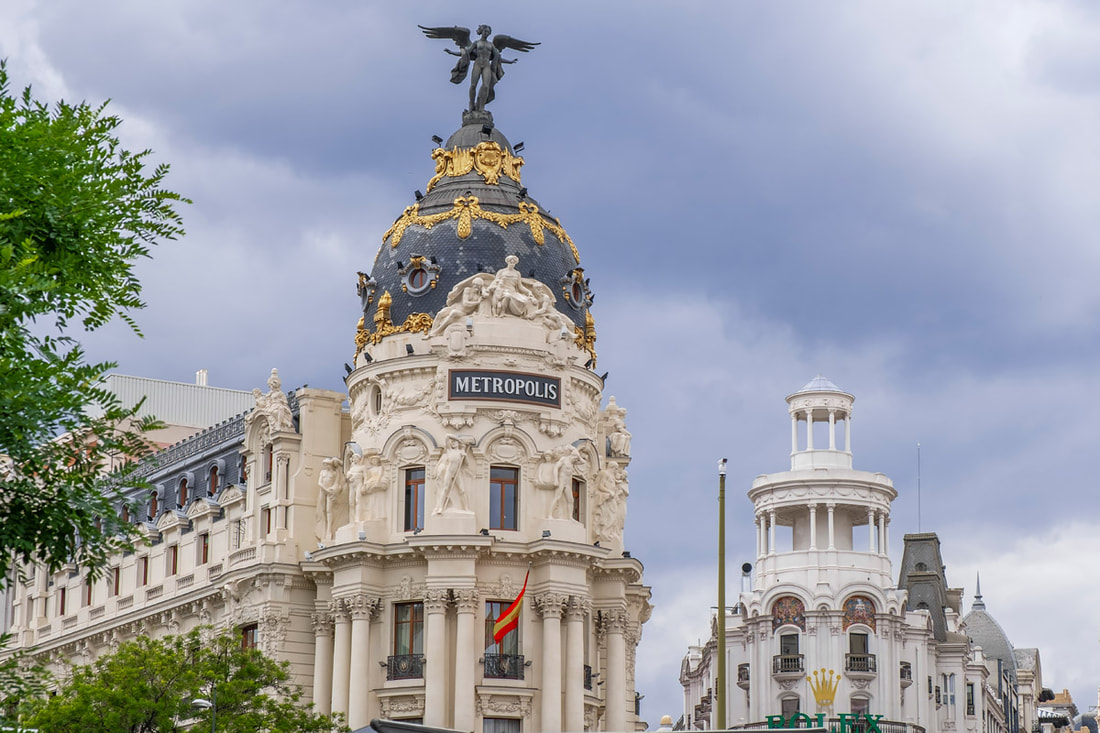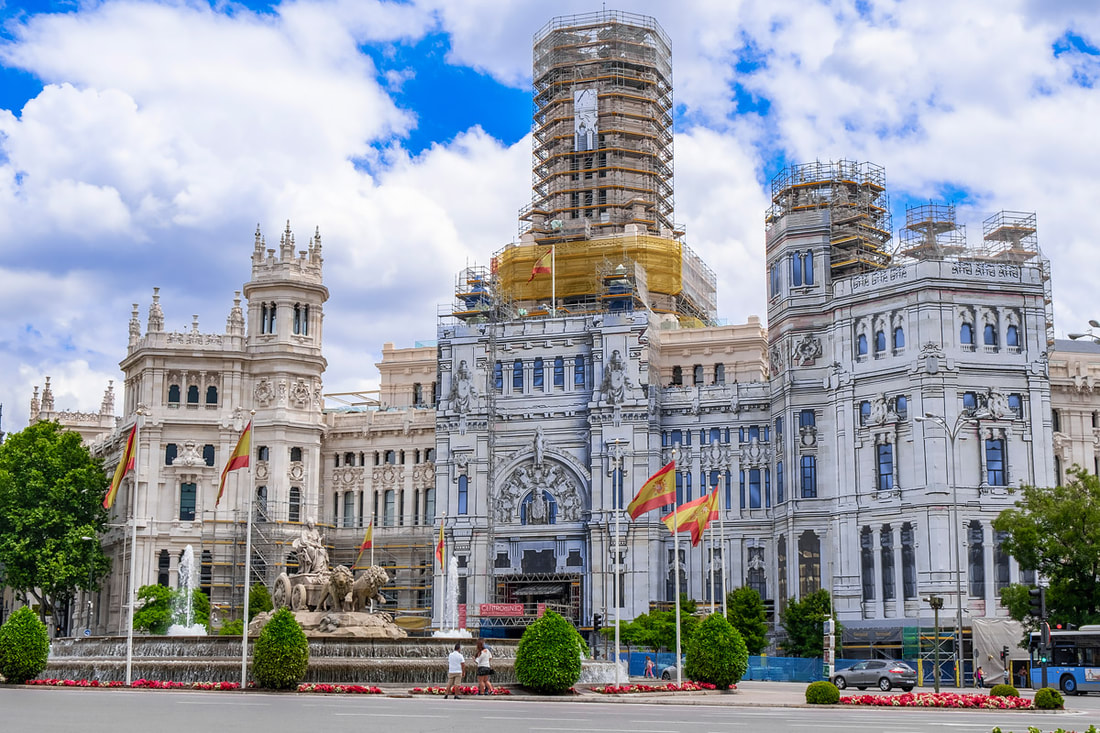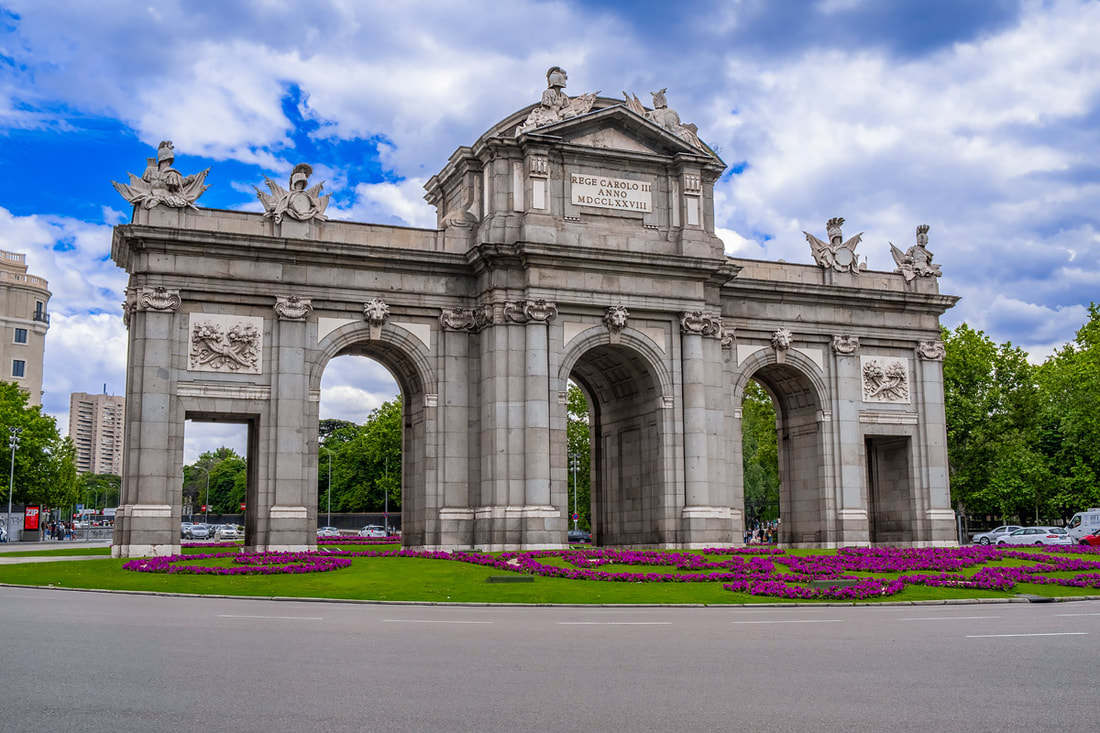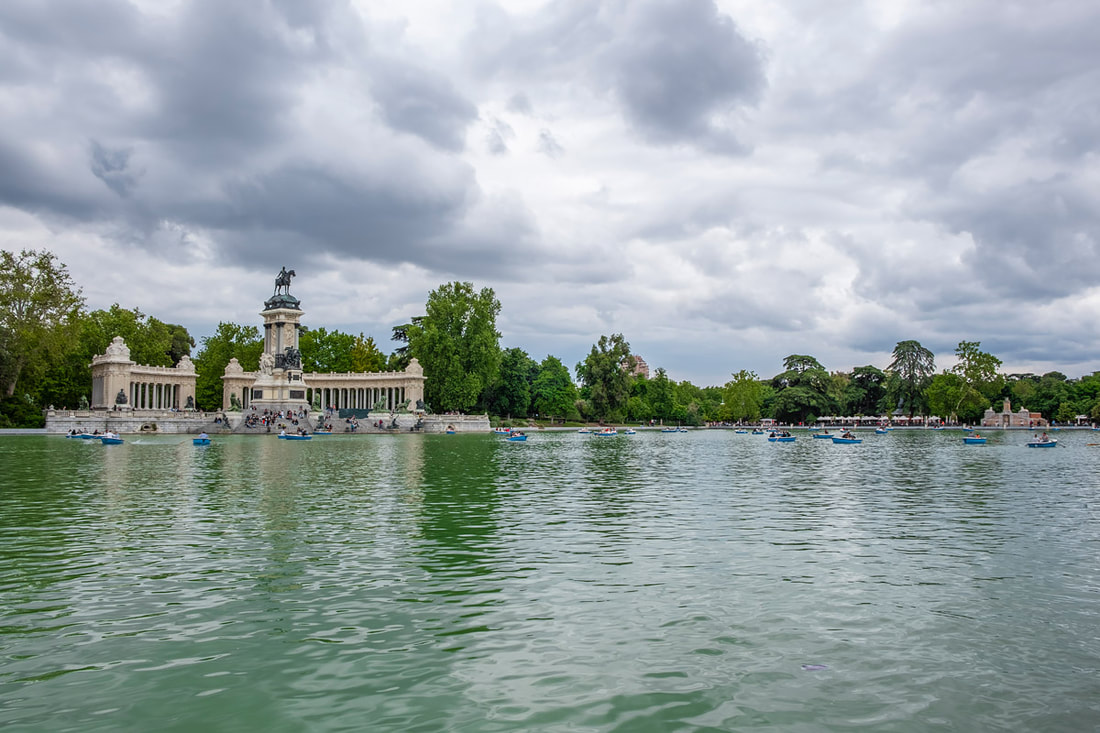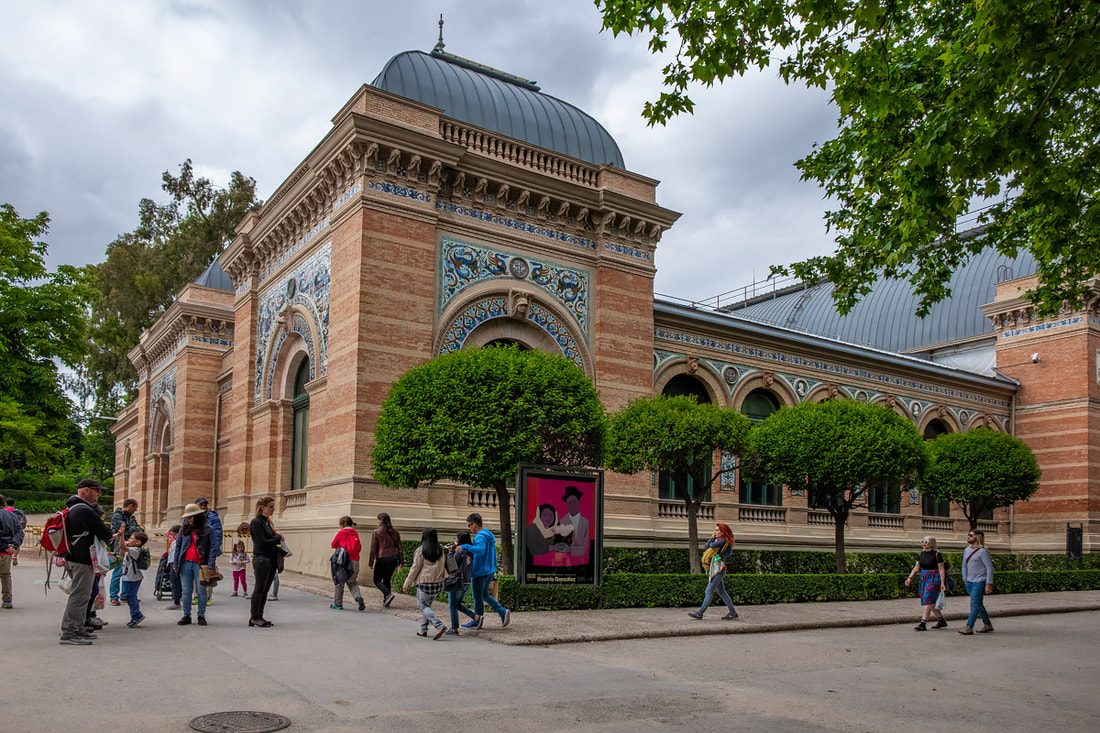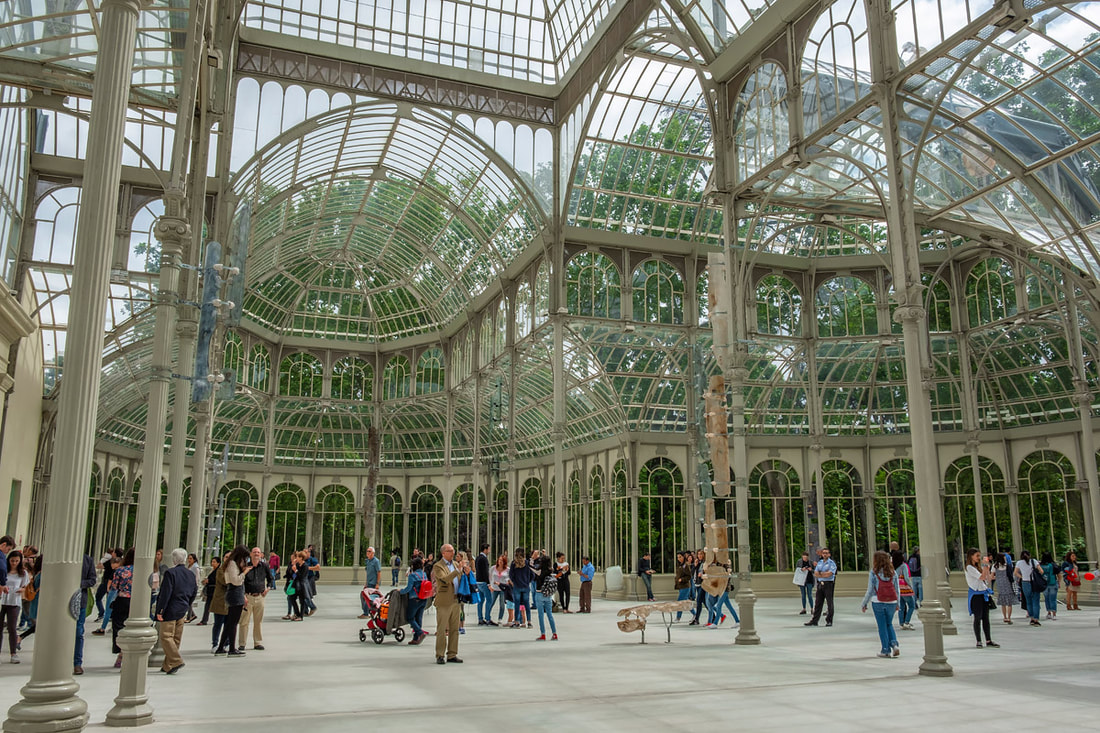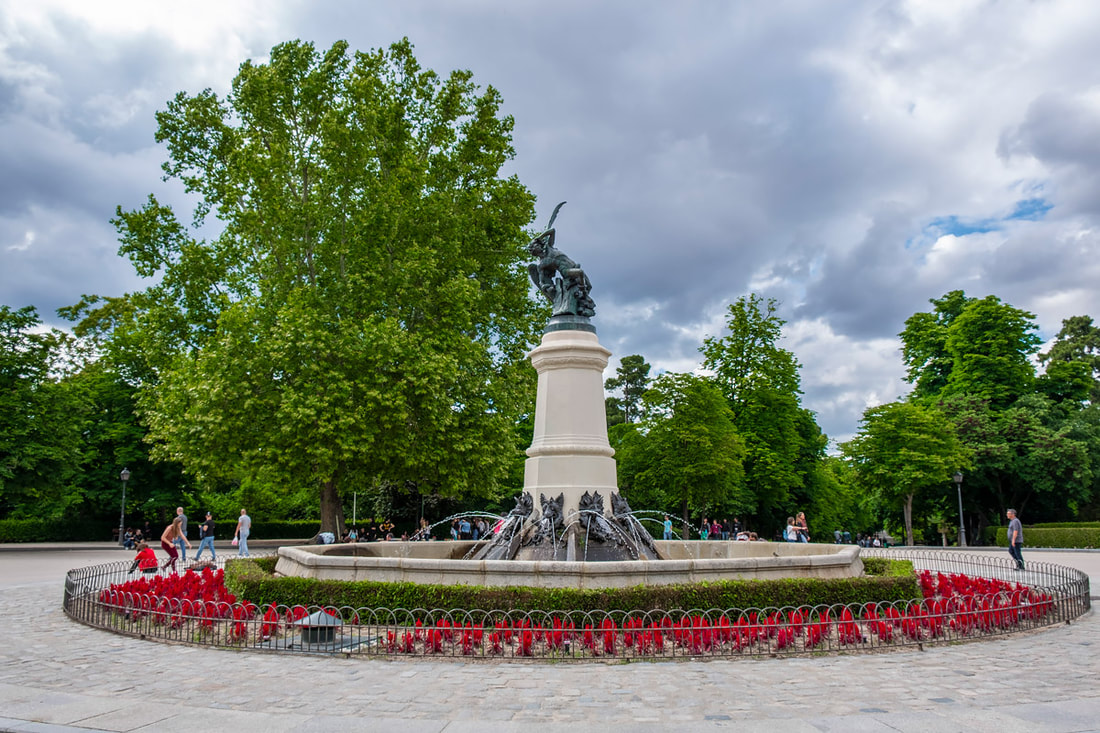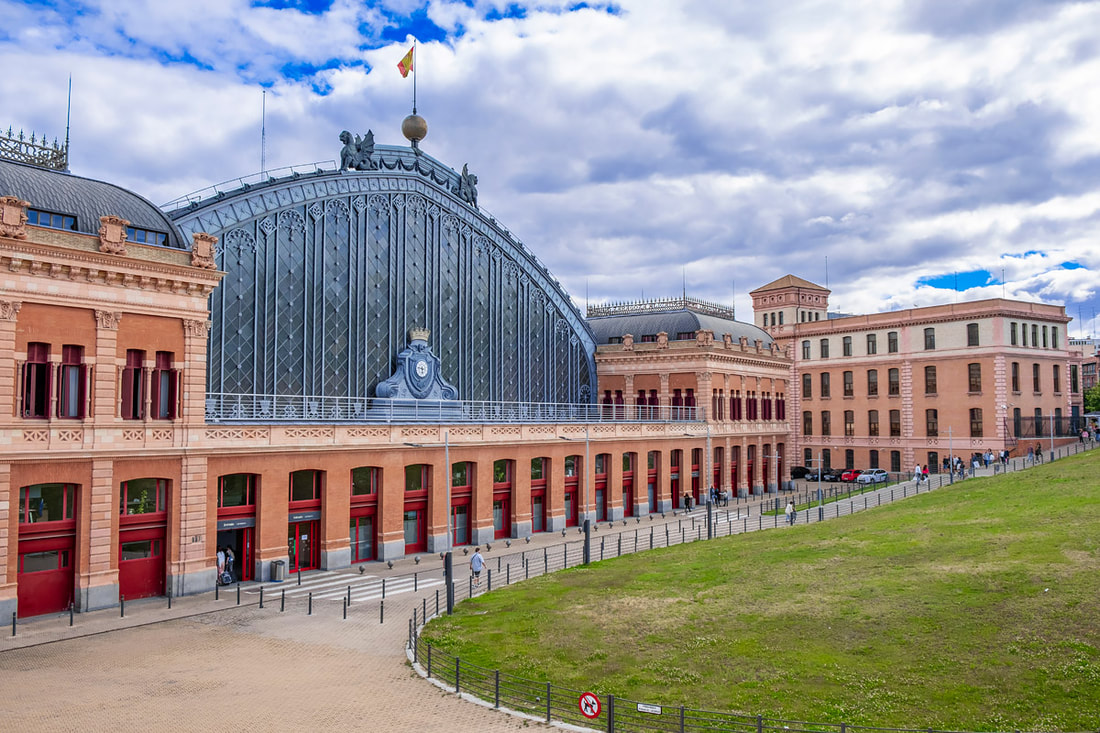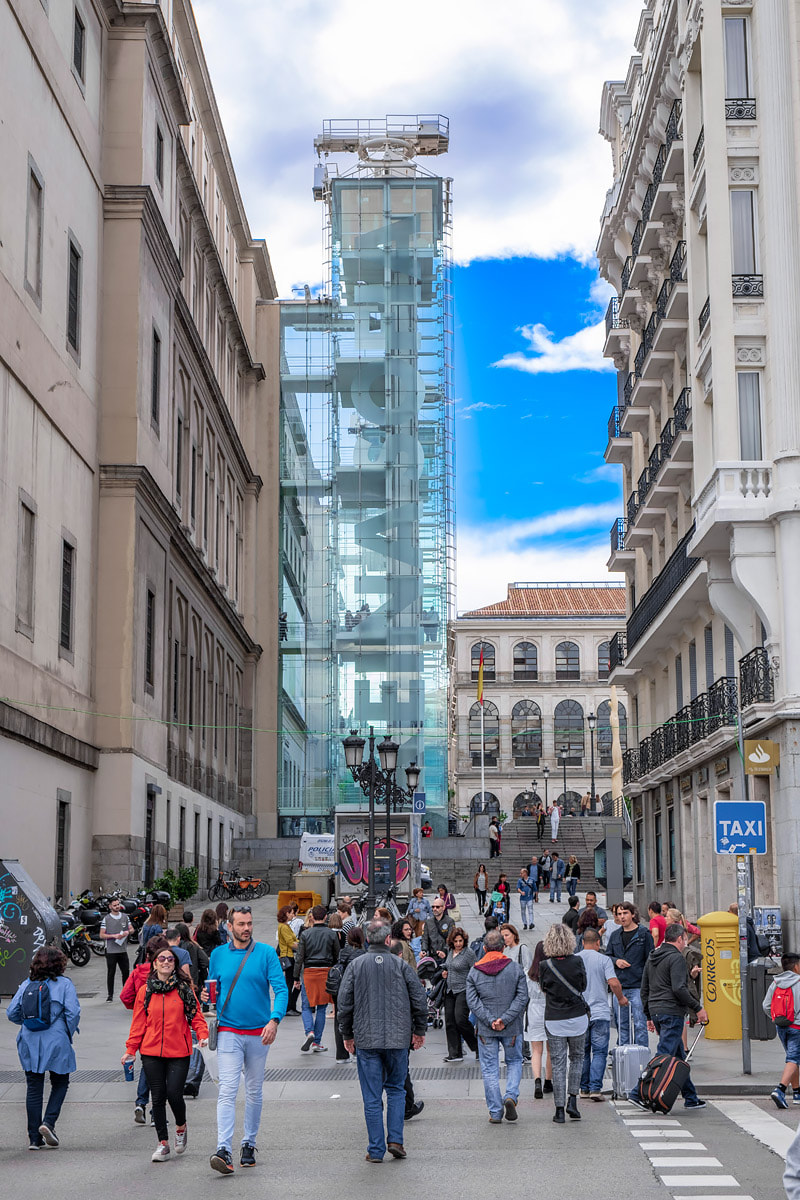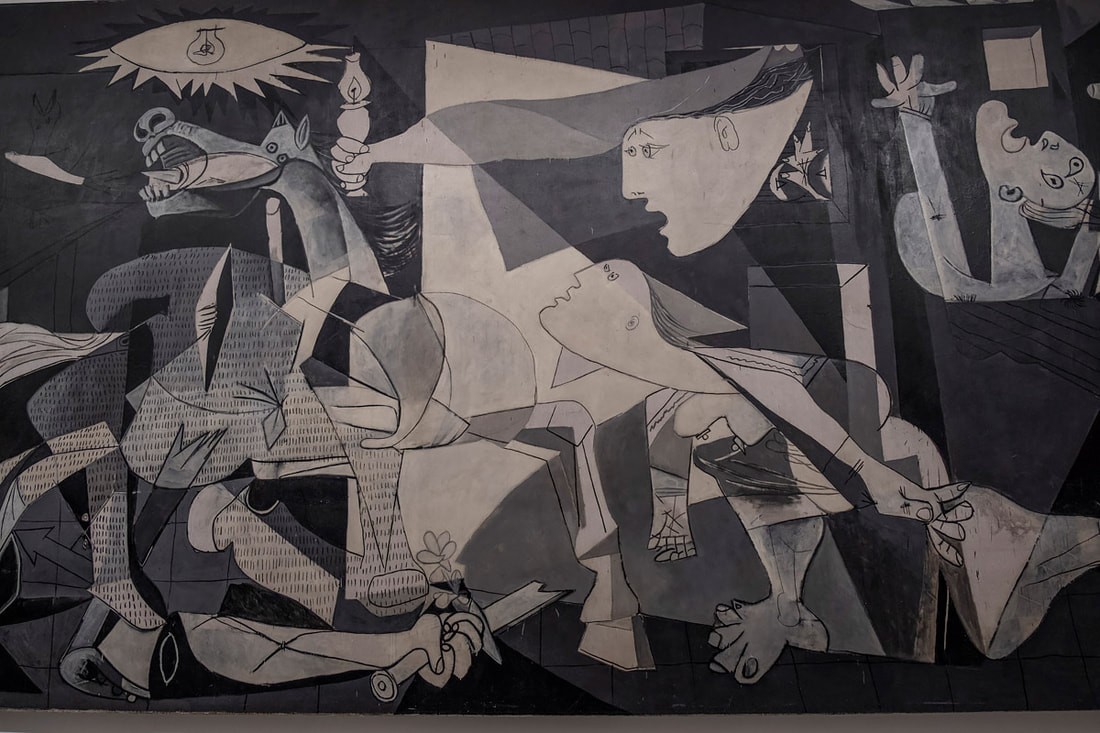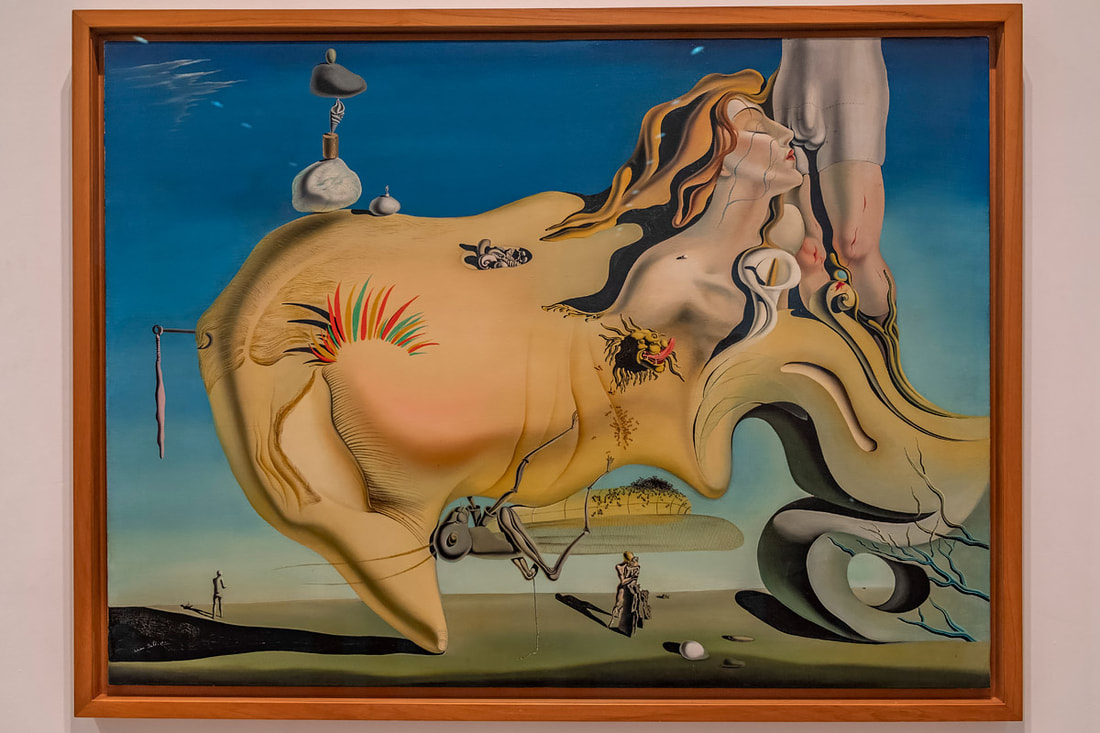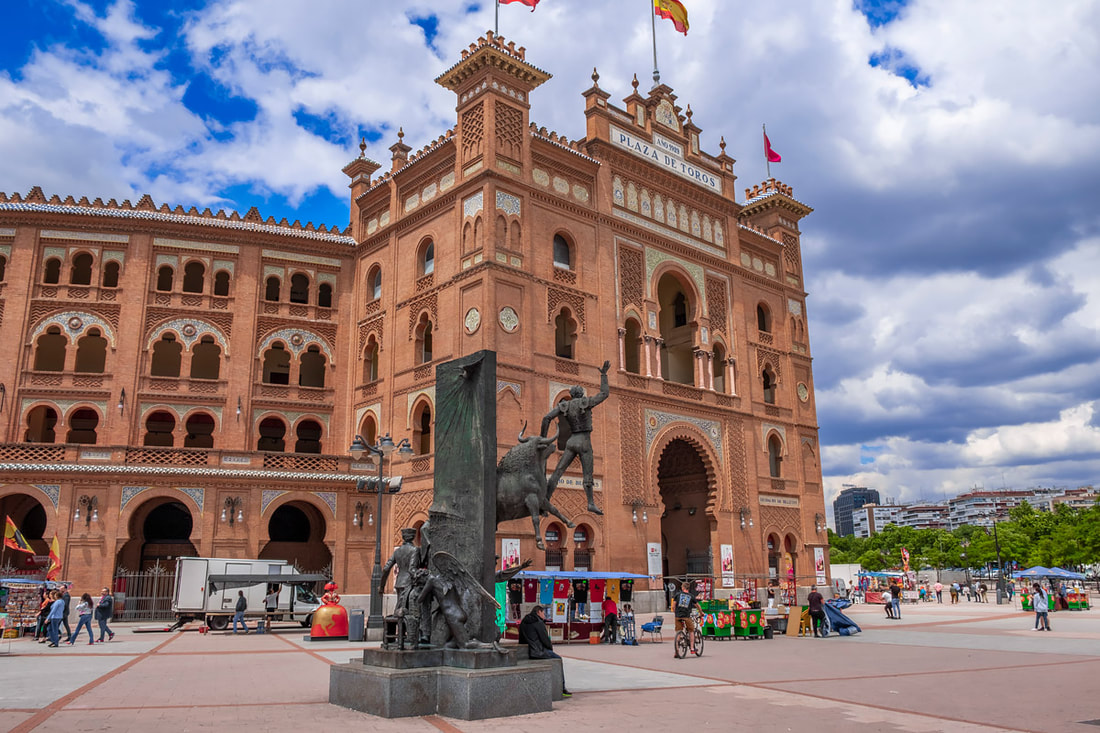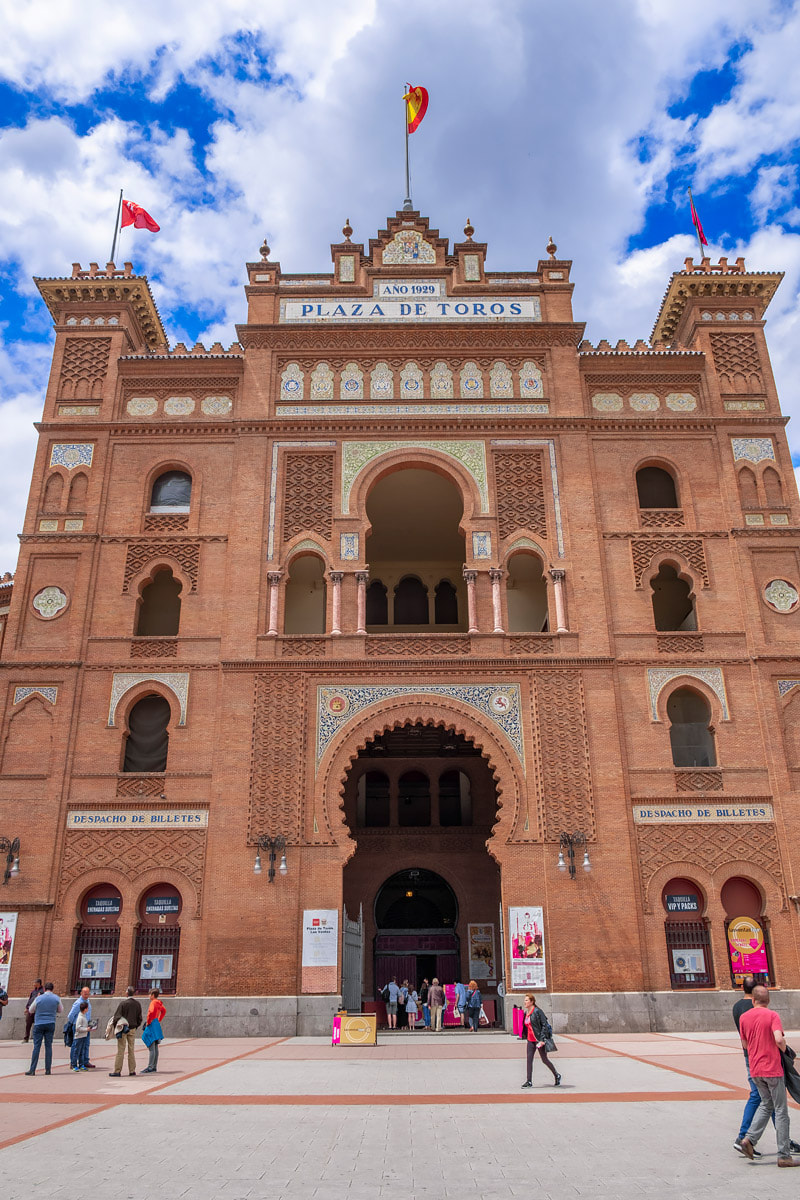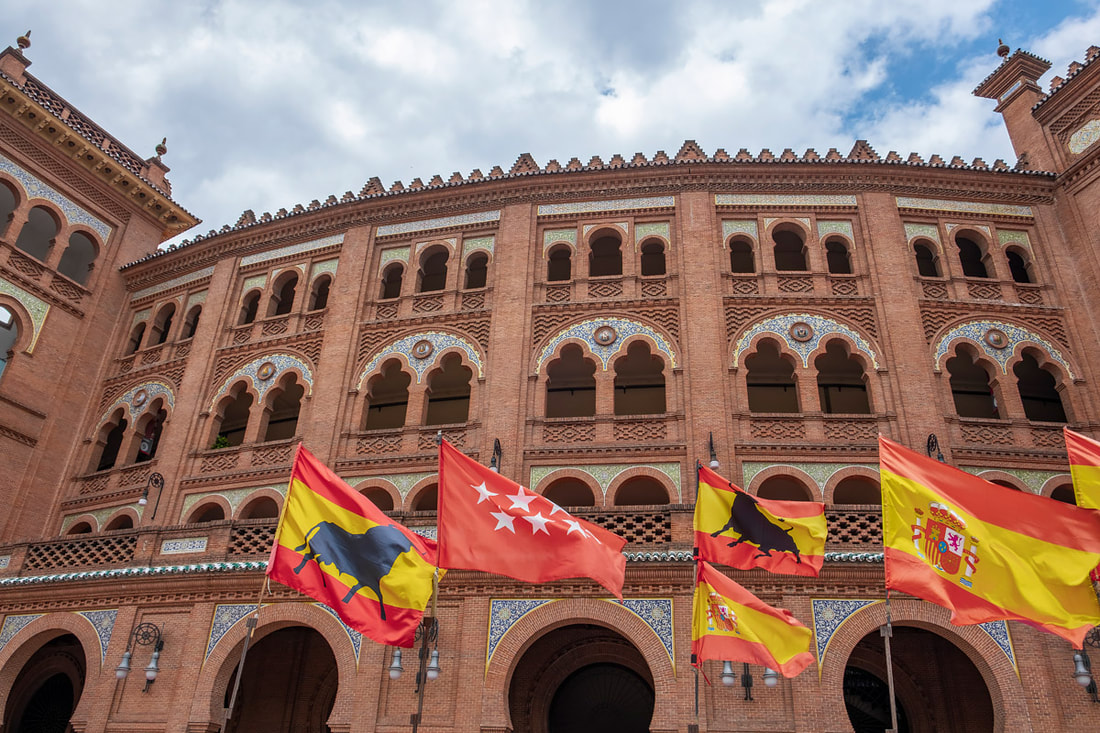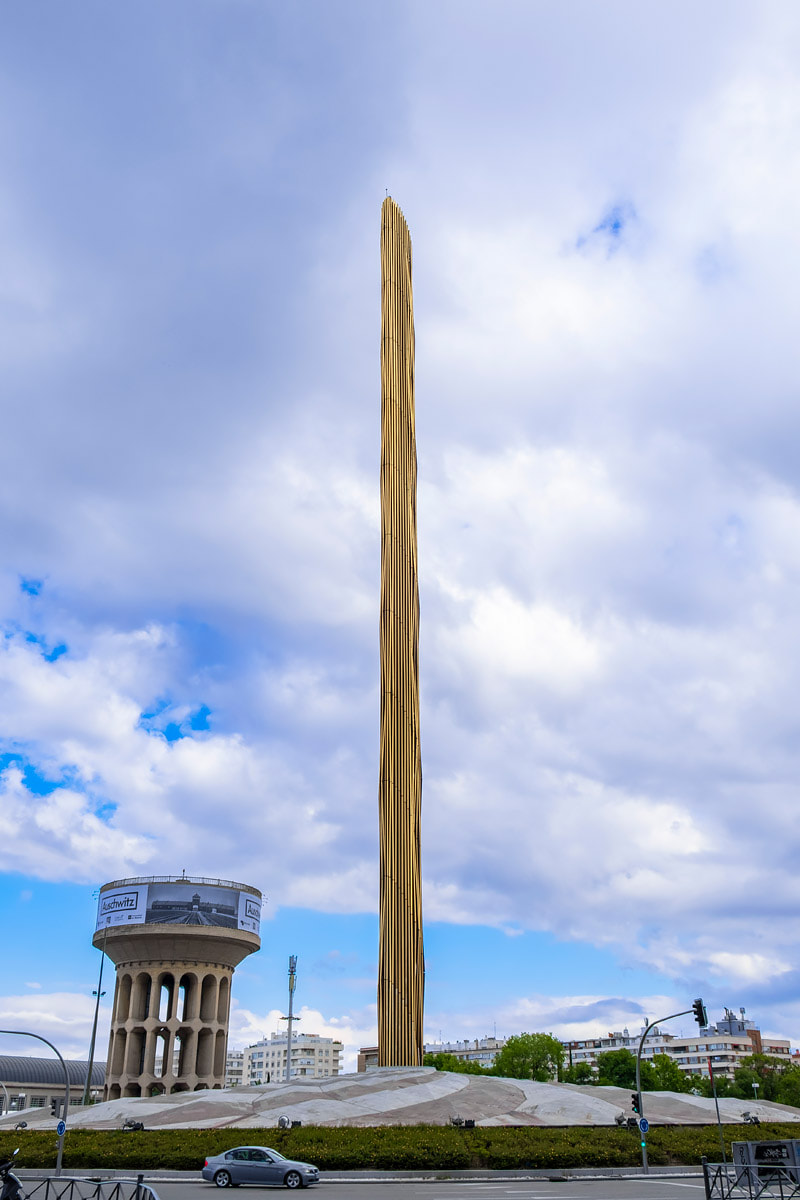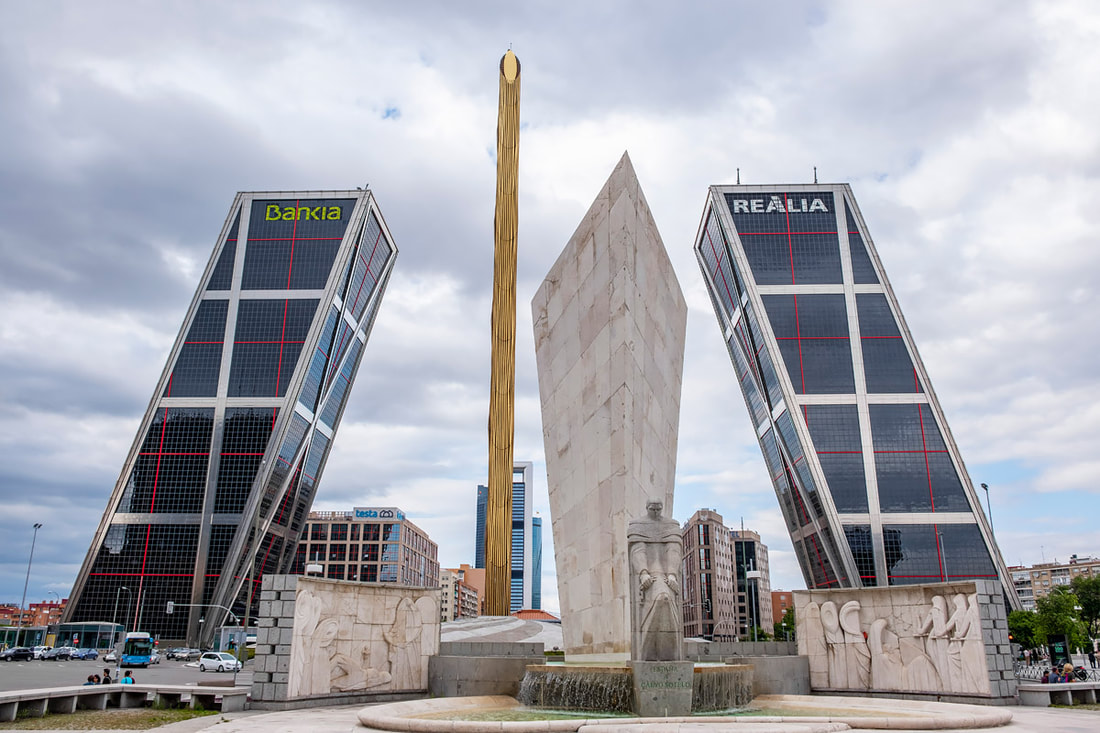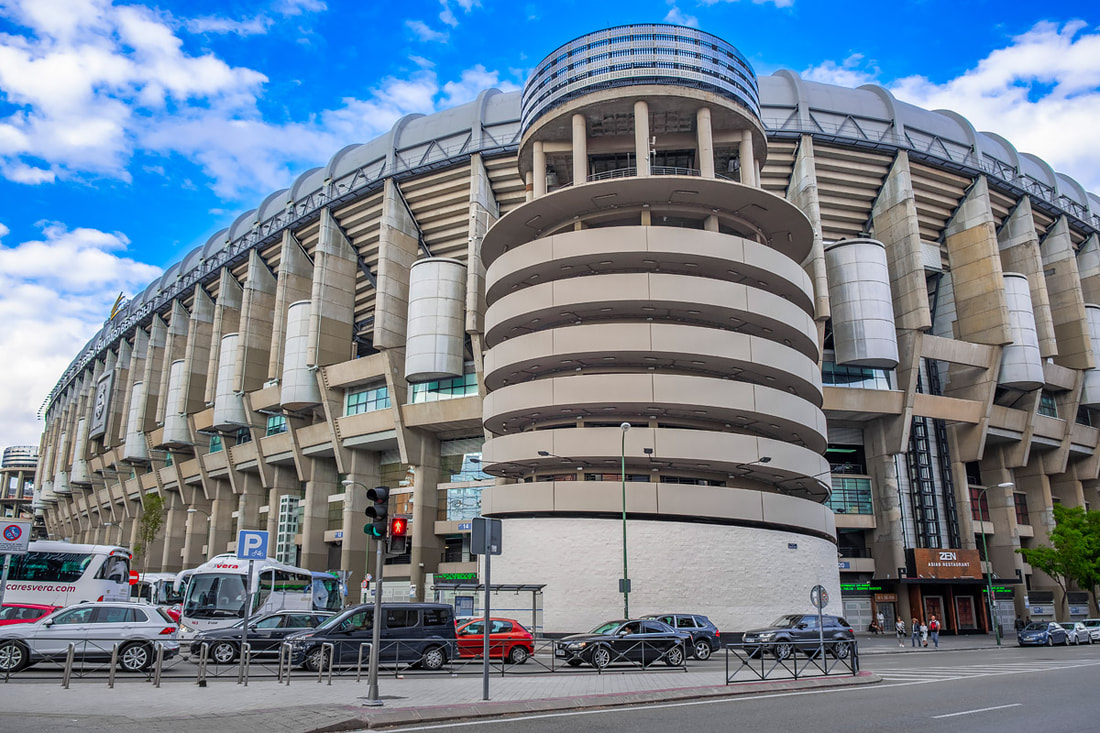By Antonio MalaraI visited Madrid for the first time in March 2008, I talked about that experience in this post which was the first one I published on my website. Reading it today it's a somewhat naive and elementary post, however I never changed it because it actually represents one of my first approaches to writing. The return to Madrid ten years later was something unplanned, it was a daring circumstance of a spring in which I improvised travel plans. In fact, the original idea that spring was to go with my friends to Munich to celebrate the party for a friend of ours that had to get married. The indecision on the part of my friends made me give up the project in favor of the trip to Japan that I made in April 2018. Subsequently my friends without my help were unable to organize the travel-party. However one of them was still intrigued by Madrid and I decided to please him and thanks to a convenient direct flight, we planned the trip for June 2018. Personally I was very happy to return to Madrid ten years after the first time also because I didn't have to plan nothing and in addition to this I had already seen in which night club I would spend my nights. CenterIn 2008 my accommodation was near the Teatro Real which was actually the first thing I saw in Madrid at the time. In 2018 I had taken a hotel in the north of the city and in doing so every day we took the metro to Sol. So the return to Madrid saw “Puerta del Sol” as the point of reference for our explorations. Furthermore, Sol was truly the central point of Madrid which in fact had a very small historic center that could be easily explored on foot. For me, returning to Madrid meant rushing to revisit the places that had attracted me the most on my first trip there and I was successful with this assumption because I remembered all those places perfectly. The first thing I noticed on returning to Madrid was the number of people in the streets. I don't know if it was the period or because I remembered wrong but the streets and squares were very populated. In Sol at first I was a bit upset because I hadn't seen the statue of "El Oso y el Madroño". I went back to the exact spot and not seeing it I thought they had removed it. Walking through the square, however, I noticed that they had moved it to the nearby side street. In changing the position the statue of the bear was facing the square while in 2008 had its back to the clock tower, symbol of the square. The charm of the town hall always remained the same with those red parts that broke symmetrically on the white, however there were important works in the square and as I said before I found it more populated during all hours of the day. A few blocks from the Puerta del Sol there was a street called Plaza de Ángel, which started from an intersection parallel to Sol and ended in the square of the same name. This street was very characteristic and full of restaurants, frequented by both tourists and locals. After having dinner on the first evening in a restaurant in that area, we returned every night. The place was very welcoming thanks also to the narrow street, the food was good and it was close to the metro. Plaza de Àngel although it was practically a central place, it was one of those areas that I had not visited before and basically I only discovered it in 2018. Plaza Mayor was definitely the most central place in Madrid and personally my favorite. Probably because it was the first important place in the city that I saw and still an original place in itself. The symmetry, the arcades and the colors of the Plaza Mayor have always impressed me positively giving me a strong inspiration. The square was one of those places that gave me an indescribable sense of inner comfort and tranquillity. The paintings on the main facade in the middle of the towers were the added value to the whole square not only from the point of view of the colors but also as an element of interruption of the basic design. Looking at the paintings that depicted men and women from a distance, one did not perceive them as such. Rather it looked like an abstract shape, with sinuous lines that were noticeable because the color tones were lighter than the surrounding red. Personally I liked looking at that facade like this, without focusing on the details but as if it were an abstract painting. Unfortunately in the period in which I returned to Madrid not only the city and therefore also the Plaza Mayor were very crowded but there were also temporary installations in the center of the square. Not only did I not like this from an aesthetic point of view but it obviously created much more confusion because the installations had been set up to attract as many people as possible. However, one of the times I've been there I was lucky enough to see people celebrating a wedding overlooking the main balcony of the building. Two guests were dressed in bright red dresses and made a beautiful setting against the background of the paintings even if unfortunately they weren't in equally elegant attitudes. Another unique thing I saw there were the street performers who were practically on every corner. There was one person who had created the costume of the Alien monster to perfection, it was incredible how well it was taken care of in the smallest details. If that man or whoever was under the mask went around at night in that costume, he would create panic in the city. Palacio Real area was always a very popular attraction. The palace was an imposing building even if it had a linear architecture. I think it was the second place of interest that I saw in Madrid the first time and in a way I was fond of it even if its design didn't drive me crazy. What struck me most in 2018, more than the building, was the green of the lawns and plants. The colors were bright green and really gave the impression of something alive. It must be said that in my opinion the view from the side of the "Puerta del Príncipe", which could be seen coming from the Plaza de Oriente, was not the best on the building. In fact this side had a somewhat flat design while the others had a three-dimensional effect, such as for example the interior view from the Plaza de la Armería. But in my opinion, the grandeur and beauty of the palace was best appreciated by the Jardines de Sabatini. The green of the gardens together with the perspective from below from that position not only made the vastness of the building even more perceived but increased its grandeur. About “Plaza de España” I had a very particular memory of a photo taken there with which I have always been satisfied. The colors of the lawn and the composition with the background of the monument to Cervantes and the statue of Don Quijote de La Mancha, I was exceptionally successful for the limited skills I had at the time. In addition to this, I had good memories of the square because when I visited it it was a moment of relaxation for us that I still have a clear memory of that today. Obviously returning to “Plaza de España”, first of all I wanted to redo the same photo that I loved so much. While I was there shooting I immediately perceived that the result was not and would not be the same but I kept this thought to myself. Subsequently I understood that every time I collide with a different reality which in this specific case was a totally different flowering of the meadow and the flowers. The fact that I didn't get the photo I wanted didn't put me in a bad mood, moreover it was fate that I couldn't take perfect photos because the large "Edificio España" was covered with scaffolding and a big billboard. They were details that led me more to enjoy a walk in the square rather than looking for the perfect photo. In general, the square was as I had left it, however a few years ago I read that "Plaza de España" underwent a total renovation to allow for more efficient traffic circulation for cars. This has led to the elimination of a lot of greenery in favor of many concrete parts. I remember that many were against this choice and even I, seeing the renders, did not agree with that change. After that event I refused to check news on those works, not if they were completed and I didn't want to look at the photos of the square as it is today. When I come back to Madrid I will go to see the new “Plaza de España” and I will experience the reactions live and not through a photo. Although very popular, the “Gran Vía” was one of those places that never particularly impressed me. Although it was full of activities and people, with very beautiful and perfectly restored buildings, I personally never had a special feeling. Probably the fact that was sloping and heavily trafficked by cars has never made it remain in my heart. Normally in 2018 I only frequented it near "Plaza del Callao", where there was the popular "Schweppes" sign above the triangular building. I liked that part a lot and I always liked to reach it by going along "Calle de Preciados" going back and forth from Sol. The other interesting part of the "Gran Vía" was the final one, where the "Metropolis" building stood, another beautiful landmark building of Madrid, triangular in shape with the famous statue on the dome. During the 2018 visit, having reached the place from the street opposite the building, I was able to notice another building that I missed during my first time in Madrid. In fact, it was so large and complex from an architectural point of view that it was not noticeable when I walked by. It was the building that housed the "Instituto Cervantes", a place that today has a purely cultural function. The palace had a very particular design; the two sides of the building were formed by very high columns that took up several floors, the sides were rounded off by the entrance placed across, formed by a very high door with two equally large statues on the sides. Probably today I would have dedicated even more photos to that building and also to another Art Deco-style building that was next to it and that I noticed only casually in 2018. A little further on from these splendid buildings was the "Fuente de Cibles", the symbolic statue of Madrid which depicted the goddess Cybele on a cart pulled by lions. This fountain also had a nice visual impact given its location in the middle of a large road junction. In the background of the “Fuente de Cibles” was the “Palacio de Cibles” another beautifully designed building that broke the corners of the entire structure. Unfortunately in 2018 this building was also covered by scaffolding because it was undergoing restoration, that year I didn't have much luck photographing the beautiful buildings in Madrid. Parque de El Retiro“Parque del El Retiro” was the largest and most important park in Madrid. Its construction dates back to around the middle of the eighteenth century and within this huge area there were many other monuments and places of interest. The park was one of the places I hadn't visited in 2008 and honestly I don't even remember why I hadn't put it in the things to see. Before arriving at the park, we stopped at the nearby "Puerta de Alcalá", another symbol of Madrid. This gateway to the city was built at the behest of King Charles III in the mid-1700s to replace another monument having the same function. Puerta de Alcalá with its three arches and decorations has always fascinated me, I've always found it harmonious except for the road and the cars that drive around it. Even if I managed to take some photos avoiding the cars, I would still see around the gate maybe a square and greener rather than the asphalt and the cars. The park was large, and its beauties within were in proportion to it. For example, the round fountains were decidedly large as were the paths that wound inside. The apex of this greatness was represented by the large rectangular pond, in fact a large lake where people could "navigate" by renting small rowing boats. From the pond there was a beautiful view of the monument to Alfonso XII. This was a huge semicircle colonnade, with the statue of a man on horseback placed on a taller central structure. The monument was very beautiful and linear, we only saw it from the edge of the pond but not up close. This is because the monument had to be reached along a road that was not on the same road as the place of interest we wanted to visit. In other words, there was not enough time and I must say that I regretted not having seen the monument to Alfonso XII up close to admire its details. The main thing I wanted to visit inside the park was the Crystal Palace. Before getting there we passed the Velázquez Palace, a very large brick-built building with an arched design and a partial glass roof. We had to skip the visit inside to spend more time on the next visit. The Crystal Palace was a building built in metal and crystal towards the end of the nineteenth century, on the occasion of an international exhibition. I had discovered the palace after my first visit to Madrid and was very impressed by it. Symmetrical and essential structures like that, with a transparency effect, were decidedly different and rare, which is why I liked them. Moreover, the area around the building had a lake with a fountain in the center and the difference in level there gave the chance to admire the building from the front from a prominent position. I spent a lot of time photographing the building and the surrounding area, then together with my friend we went inside. The interior of the palace was totally empty except for the people who visited it. I have to say that while interesting, the external beauty was far superior. The palace was used as a venue for modern art exhibitions but there were none during our visit. Probably during some exhibitions, the interior took on a more interesting aspect but I must say that that large empty space didn't strike me that much. The visit to the park lasted more than an hour and a half of which half an hour dedicated only to the Crystal Palace which was in fact our main goal. Reina SofiaReina Sofia National Museum was a museum of modern and contemporary art. It was located near the Atocha station which was a building that immediately fascinated me from the first time I saw it. For the occasion, therefore, I stopped to take some pictures of the outside of Atocha, with that red brick design and the iconic analog clock in the centre. The road that led to the Reina Sofia was located right in front of the Atocha station and we reached it in a few minutes. The Reina Sofia National Museum had the characteristic of having free admission, a good thing from an economic point of view but not from an artistic one. I am of the opinion that access to art should be exclusive because such are the people who produce it and love it. However, together with my friend we did not behave as exclusive amateurs, in fact our mission inside the Reina Sofia was related to the sight of some works. The museum was mainly famous for hosting Picasso's Guernica and it was precisely that work that we rushed to see. For those who had never seen it, Guernica was a mammoth work that took up an entire wall both in width and height. I knew it from a school book and when I saw it for the first time in 2008 I couldn't believe it. Obviously when one knows what to expect the reaction is different, in fact when I returned to Guernica I concentrated more on one thing that could not be done; photograph the painting. Placed among people and in front of the work, I took several photos from various angles in order to have my own photo of the work, something that has a narcissistic connotation. This did not allow me to enjoy the painting to the fullest and it was also partly the fault of that free entry that gave me the false belief that I could enjoy the view of the painting at any time. The reality was that once I got out of the museum, I never went back to it as well as Madrid. Surely next time I will focus on doing something like observing the details and enjoying the work where it is and not reproduced in the photo. The next works we saw were some by Salvador Dalí. The style of the Spanish artist has always fascinated me and admiring his works was always a good experience. That "loose" painting, those dreamlike atmospheres that saw subjects with a strong and explicit sexuality, were unique. In addition to this, the variety of colors was also a theme that I loved very much, saturated colors that I also try to reproduce in my photos. The visit inside the Reina Sofia lasted about an hour and was a bit confusing. I remember there were things we left out in order to go back to it, which we obviously couldn't do. Plaza de TorosPlaza de Toros in Madrid was the first structure of its kind that I have ever seen in my life. At the time I was very obsessed with Corrida because I was fascinated by the book "Death in the Afternoon" by Ernest Hemingway. The “Plaza” in Madrid was an incredibly large bullring, a red brick construction that was not only imposing but totally different from normal structures. As happens in these cases, seeing the largest of the structures first, then one is a little disappointed to see the others. However, I also have good memories of the other plazas I saw while traveling around Spain, but the one in Madrid amplified my expectations a bit. So although I love the Plaza de Toros in Madrid, I always have an ambivalent relationship because it has somewhat ruined my discovery of the others. However, for me it was a pleasure to go back to see that place, and having a curious travel companion, I liked being an escort who brought someone to discover very special buildings like that one. Unfortunately what I never liked about the bullring were the surrounding area. The “Plaza” being a little out of the centre, it was surrounded by newer buildings but those without personality, a bit monotonous and all the same. Moreover, the proximity to a major road junction made things worse because the continuity of the asphalt was a totally different and out of context element. Plaza de Toros in Madrid was a real monument but it was surrounded by structures and infrastructures that do not highlight its beauty. Plaza de CastillaPlaza de Castilla was a modern square located in the north of the city. I had known this place as usual from a particular photo that saw two leaning twin towers. The place was unique and I always had a new curiosity to see it again, documenting everything with new photographs. Destiny didn't want to disappoint me and once I got to the square I had a new surprise. On my first visit what struck me was the perspective (seen in the photo) of the José Calvo Sotelo monument with the Towers behind it. The monument was a kind of marble monolith and the two leaning towers joined as in a frame on it. It was a game of perspective that made the towers appear to be at the same height as the monument. In 2018, beyond this "classic" view, was added a new structure: "Columna de Calatrava". It was a tall gold-colored column placed in the center of the giant road roundabout. Despite its height, I initially noticed this obelisk as a disturbing element, what I mean is that as usual I had gone to take photos to recreate the already made compositions but there was something that didn't convince me. There I understood that the obelisk was not present in 2008 and I must say that in the end it was really an extra element. There was no way to take a picture with the monument, towers and obelisk that were symmetrical. Wherever I moved, the obelisk always remained asymmetrical in composition, something that bothered me a lot. I found Plaza de Castilla too full of elements while the first time it gave more of a feeling of bareness, of grandeur in the middle of nowhere which I preferred. Today even further north of that area, there are many new skyscrapers so I think the square was like a sort of opening for a future "Downtown" of Madrid. I have seen some of these new skyscrapers in photos and although on the one hand it intrigues me to see them, on the other I have developed a certain disgust for these modern architecture, perhaps only good for creating fine art photos. Let's say that in general the return to Plaza de Castilla was not as exciting as the first time. After leaving the square, I made a visit that I hadn't done in 2008 by going to see Plaza de Castilla, a visit that included a simple stop on the same metro line. Returning to the center, we stopped at the Santiago Bernabéu, the famous stadium where Real Madrid plays, thus seeing this iconic place that I had never visited. We stopped the time to take some pictures without even going around it because the surface covered at least four blocks. The stadium itself did not give an impression of grandeur and this was because I could only see part of it and because it was surrounded by buildings. Mostly the side pillars and then the sign with the name were striking. What I found horrible however was the parking; all those cars and the asphalt only made a structure ugly, which nonetheless had its charm. That day the stadium was hosting a gala and this was noticeable because the people entering the stadium were dressed up in luxury. To be honest, I didn't particularly like that quick visit to the Bernabéu stadium, there were elements such as cars and houses around that didn't allow me to appreciate it at its best. A few years ago began a monumental restoration of the stadium which will also change the external appearance of the structure. I have to say that I regretted not having dedicated more photos to the Bernabéu, an opportunity to preserve some historical memory thanks to the photos. NightlifeIn 2018, I spent my nights inside the Vive Madrid. This entertainment club was like a regular night club, full of all types of people. The place had a rectangular plan and was very large, probably even dispersive, but it was so crowded that one was never alone. Inside, there were numerous drinking counters and private couches in nearly every corner of the venue. It was filled with international girls inside, but they didn't all offer the same kind of company. There were beautiful girls who earned their money by bringing customers to private sofas where these gentlemen, almost all aged fifty and older, only spent time drinking in the company of the girls. Personally, I concentrated on the girls with whom, after drinking and chatting for a while, I then withdrew to their rooms. However, I must say that I really liked the atmosphere of Vive Madrid, one of the few clubs that were different in a certain sense, and the Latin girls were great company and very funny, people with whom it was pleasant even just to talk. Conclusions The return to Madrid in 2018 was a short trip of only three nights, a hastily organized trip with the consequences that this entails. In fact, even though I knew the city, those few nights weren't enough for me to enjoy it in the right way or as I wanted. Although I managed to visit even more than my previous visit to Madrid, I would have liked to still remain in the city. Let's say that the 2018 Madrid was another piece on which in the future I will add those things that will allow me to enjoy the Spanish capital in the perfect way. In fact, I have to go back to Madrid because it is a city of a thousand nuances, even after 2018 I continued to discover new things that gave me new motivation to go back. From classic buildings to design ones, to other nightclubs and beyond this also other places nearby. In fact Madrid is perfect for visiting cities like Toledo or Segovia and if there is time to explore, there’s also the alien looking mountains of “La Pedriza”. Last September I was about to go back to realize this plan but then circumstances brought me to Ireland. Let's say that the idea is always present and sooner or later I will be able to realize it, perhaps without planning it. Pictures: Antonio Malara
Camera: Fujifilm XT-20
0 Comments
Leave a Reply. |
